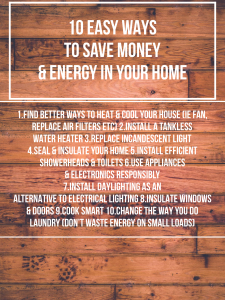
Radon Testing in Homes: Everything You Need to Know
Introduction
Radon is a colorless, odorless, and tasteless radioactive gas which occurs naturally in the earth’s soil and rocks. Exposure to high levels of radon can cause serious health problems, including lung cancer. As a result, it’s important for homeowners to test their homes for radon and take appropriate action if high levels are detected.
In this article, we will provide you with everything you need to know about radon testing in homes, including where radon is most common, how to test for radon in your home, what to do if your home has high radon levels, and whether you should walk away from a house with radon. By the end of this article, you will have the knowledge you need to ensure your home is safe and healthy for you and your family.
Where is Radon Most Common?
Radon is a naturally occurring gas which can be found all over the United States. However, some areas are more prone to high radon levels than others. The Environmental Protection Agency (EPA) has developed a map of average radon levels by county, which can give you an idea of the likelihood of high radon levels in your area.
The EPA has identified several “Radon Zones” throughout the United States, where homes are more likely to have elevated levels of radon. These zones are based on data collected from radon tests performed in homes throughout the country, and are divided into three categories: Zone 1, Zone 2, and Zone 3.
- Zone 1: This zone has the highest potential for elevated radon levels, with an average indoor radon screening level greater than 4 pCi/L. This zone includes counties in states such as Pennsylvania, Maryland, Virginia, and several others.
- Zone 2: This zone has a moderate potential for elevated radon levels, with an average indoor radon screening level between 2 and 4 pCi/L. This zone includes counties in states such as New York, Illinois, and several others.
- Zone 3: This zone has the lowest potential for elevated radon levels, with an average indoor radon screening level less than 2 pCi/L. This zone includes counties in states such as Arizona, California, and several others.
It’s important to note, just because a home is located in a Zone 3 area does not mean it is completely safe from radon exposure. Radon levels can vary from home to home, even within the same neighborhood. It’s always best to have a radon test performed in any home you’re considering buying, regardless of its location. Here is a link to the map on the EPA’s website or you can contact your state radon office.
How to Test for Radon in Your Home
There are three main ways to test your home for radon: hiring a home inspector, a certified radon measurement professional or using a do-it-yourself radon testing kit.
If you choose to hire a professional, be sure to select someone who is certified by either the National Radon Proficiency Program or the National Radon Safety Board. These certifications ensure that the individual has the knowledge and experience necessary to accurately measure radon levels in your home.
If you prefer to test your home on your own, radon testing kits are available for purchase at most hardware stores or online. When selecting a kit, be sure to choose one that is approved by the EPA and includes both short-term and long-term testing options. Short-term tests typically take between two and seven days, while long-term tests can last up to 90 days. We recommend AccuStar as a great resource for DIY kits.
Regardless of the testing method you choose, be sure to follow the instructions carefully to ensure accurate results. You should also test your home for radon on a regular basis, especially if you have made changes to your home’s heating or ventilation systems, or if you have experienced structural changes such as a new addition to your home.
What to Do if Your Home Has High Radon Levels
If your home has high radon levels, there are several options available to you to reduce your exposure to this harmful gas. The most common approach is to install a radon mitigation system, which typically consists of a ventilation system which draws radon out of your home and vents it outside.
The cost of a radon mitigation system can vary depending on the size of your home, the complexity of the system, and other factors. However, in general, the cost of mitigation ranges from a few hundred to a few thousand dollars. While this may seem like a significant expense, it’s important to remember radon exposure can have serious health consequences, so the cost of mitigation is a small price to pay for your health and safety.
If you are in the process of buying a home and the radon test results come back high, you may be able to negotiate with the seller to either install a mitigation system or reduce the price of the home to cover the cost of installation.
It’s important to note not all homes with high radon levels need to have a mitigation system installed. In some cases, simple changes such as sealing foundation cracks or improving ventilation can be enough to reduce radon levels to safe levels. It’s always best to consult with a certified radon professional to determine the best course of action for your specific situation.
Should I Walk Away from a House with Radon?
If you’ve had a radon test performed on a home you’re considering buying and the results come back with high radon levels, you may be wondering if you should walk away from the sale. The answer to this question depends on several factors, including the level of radon, the cost of mitigation, and your personal risk tolerance.
First, it’s important to understand, no level of radon is completely safe. The EPA recommends taking action to reduce radon levels in your home if they are at or above 4.0 pCi/L (picocuries per liter). However, even levels below this threshold can still pose some risk.
If the radon levels in the home you’re considering are above the recommended threshold, you should consider the cost of mitigation. As mentioned earlier, the cost of mitigation can vary, but in general, it can range from a few hundred to a few thousand dollars. If the cost of mitigation is more than you’re willing to pay, or if the seller is unwilling to negotiate on the price of the home to cover the cost of mitigation, it may be best to walk away from the sale.
However, if you’re willing to invest in radon mitigation, it’s important to understand this process can be very effective in reducing radon levels to safe levels. With the installation of a mitigation system, you can significantly reduce your exposure to radon and enjoy a healthy, safe home.
Ultimately, the decision to walk away from a home with radon levels above the recommended threshold is a personal one which depends on a variety of factors. It’s always best to consult with a certified radon professional to discuss your options and determine the best course of action for your specific situation.
Conclusion
Radon is a serious health risk and should not be overlooked when buying a home. It’s important to have a radon test performed in any home you’re considering buying, regardless of its location. If high levels of radon are found, it’s important to take action to reduce your exposure to this radioactive gas.
If you’re buying a home, consider hiring a professional home inspector to perform a thorough inspection, including a radon test. A professional home inspector can also identify other potential safety hazards in the home, such as electrical or plumbing issues.
In addition to hiring a professional home inspector, it’s important to educate yourself about the risks of radon and how to protect yourself and your family. This includes learning about the symptoms of radon exposure, such as coughing, shortness of breath, and chest pain, and knowing when to seek medical attention.
By taking these steps, you can make an informed decision when buying a home and ensure you and your family are protected from the potential dangers of radon. Remember, a safe and healthy home is a happy home.


